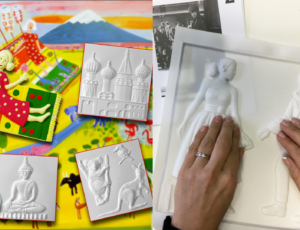In the past, people with visual impairments faced significant challenges when it came to reading and engaging with books. However, recent innovations in technology and publishing have drastically transformed this experience. Today, visually impaired individuals have access to a variety of tools and resources that enable them to engage with books more inclusively. This article explores the cutting-edge developments that are making books more accessible to the visually impaired community, from audio books to tactile formats and advanced digital tools.
I. Audio Books and Podcasts: The New Era of Access
One of the most significant innovations in making books accessible to visually impaired individuals is the rise of audiobooks. Audiobooks allow users to “read” books through narration, removing the barrier of needing to see the text. Platforms like Audible, OverDrive, and Bookshare have revolutionized how visually impaired individuals access literature, providing an expansive library of books that can be downloaded and listened to.
In addition, podcasts have become a popular form of content for visually impaired people. Many books and educational materials are now being offered as podcast episodes, allowing for an even wider range of topics to be explored. This innovation is particularly valuable for those who are on the go and need to consume books hands-free.
II. Braille Technology: Modernizing a Classic Approach
While audiobooks offer tremendous accessibility, there are still many individuals who rely on Braille as their primary reading method. Innovations in Braille technology have made reading easier and more efficient. Braille e-readers like the BrailleNote Touch and the BRLTTY software allow users to access digital content on devices that convert text to Braille through tactile displays.
Moreover, advancements in Braille embossers and printers have made it easier for visually impaired individuals to access hardcopy books in Braille. Although the process is more time-consuming and costly than digital formats, these innovations continue to empower individuals who prefer or require Braille.
III. Tactile Books and Interactive Formats
For young children and early learners, tactile books offer a unique opportunity to engage with stories. These books contain textured illustrations, raised shapes, and Braille characters that allow children to explore stories through touch. Authors and illustrators are increasingly focusing on creating books that integrate both tactile elements and audio features to create a multisensory experience.
One breakthrough in this field is the interactive tactile books that come with a combination of touchable elements, audio narration, and even voice-activated features. These innovations provide a hands-on, immersive experience, giving visually impaired children the same ability to learn and enjoy reading as their sighted peers.
IV. Smart Devices and Apps for Reading
Another transformative innovation is the development of smart devices and apps tailored to visually impaired readers. Apps such as Voice Dream Reader, KNFB Reader, and Seeing AI have been game-changers in improving the reading experience for visually impaired individuals. These apps use text recognition technology to scan printed material and read it aloud, allowing users to access printed books, newspapers, and even menus at restaurants.
Additionally, screen readers like JAWS (Job Access With Speech) and NVDA (NonVisual Desktop Access) provide an interface that reads aloud everything displayed on the screen, including books on digital platforms. These tools ensure that individuals who cannot see the screen can still access and enjoy digital reading materials.
V. Collaborative Efforts in the Publishing Industry
The publishing industry is making significant strides in creating accessible formats for visually impaired readers. Major publishers, including Penguin Random House and HarperCollins, are working to make their catalogues available in various accessible formats, such as Braille, large print, and audio.
In addition to the industry giants, nonprofits like the National Federation of the Blind (NFB) and Bookshare continue to work tirelessly to provide free access to books for visually impaired individuals. These organizations partner with schools, libraries, and individuals to ensure that everyone, regardless of their vision, can enjoy the world of literature.
Conclusion:
The innovations in books for visually impaired individuals represent a massive leap forward in making literature accessible to all. From audio books to tactile reading materials and cutting-edge apps, these advancements are helping bridge the gap between sighted and non-sighted readers. As technology continues to evolve, it’s clear that the future of accessible reading is bright, offering more engaging, inclusive, and diverse experiences for individuals with visual impairments. With ongoing collaboration between technology developers, publishers, and advocacy groups, visually impaired readers can look forward to a world of limitless possibilities when it comes to reading and learning.

